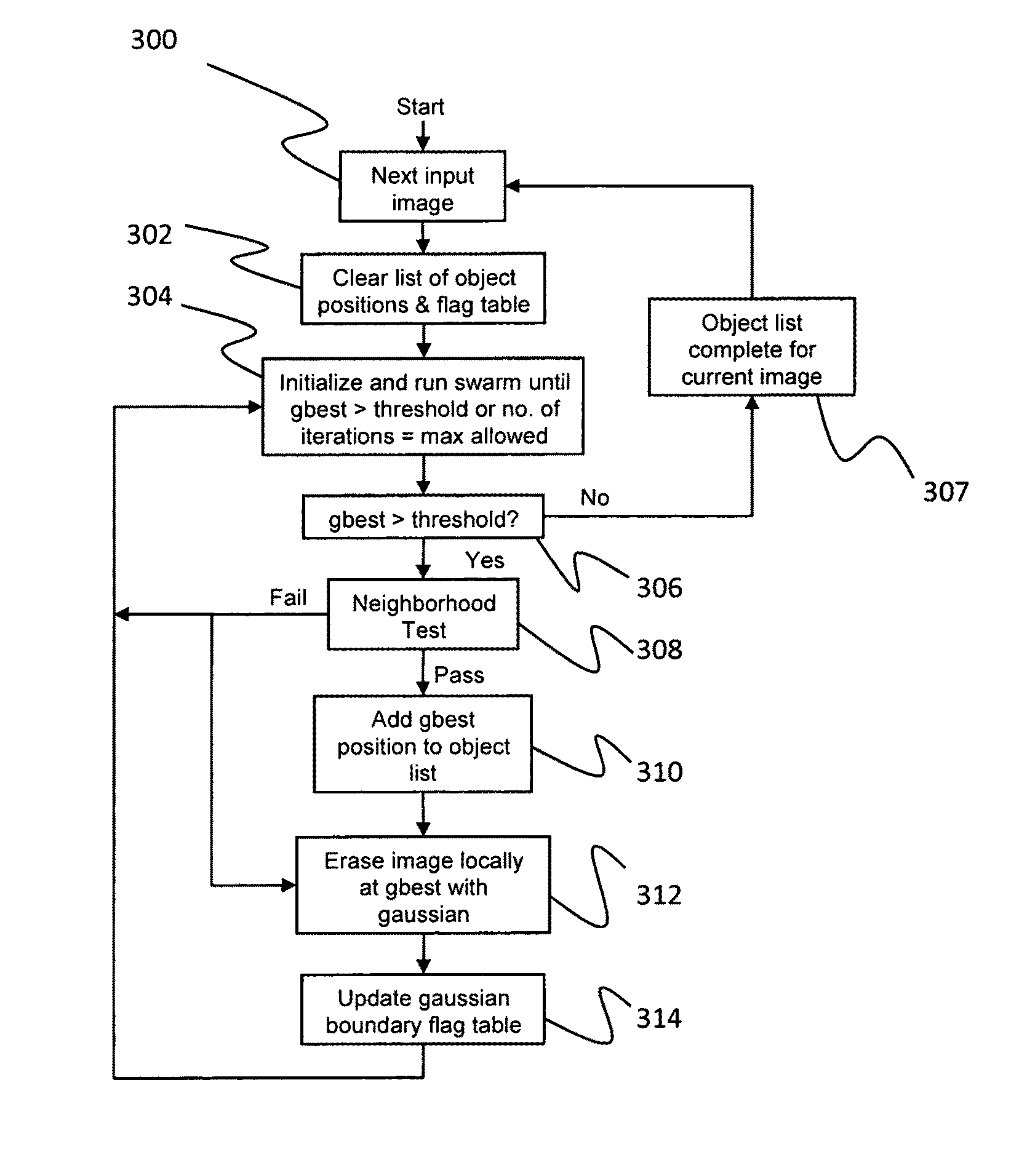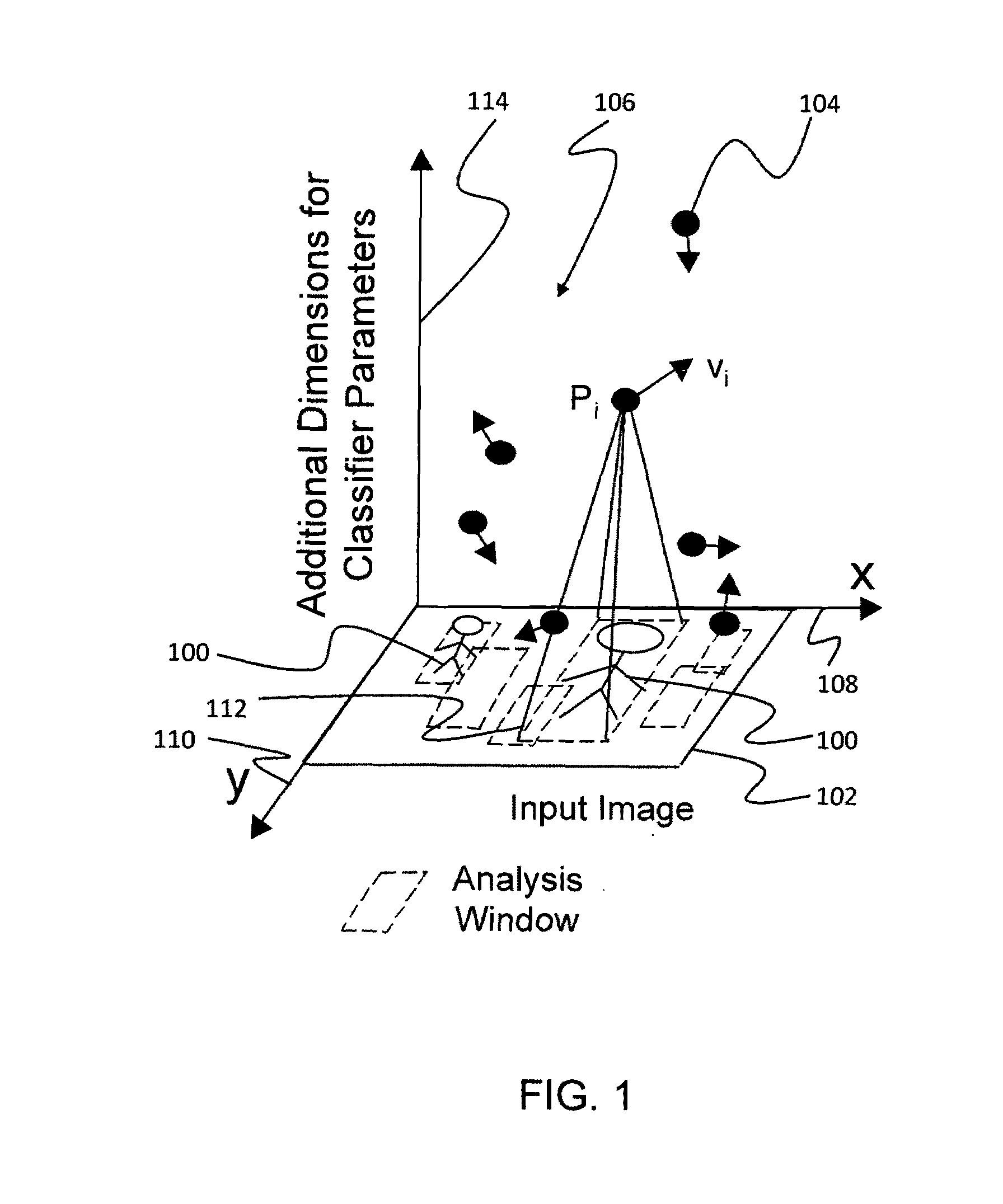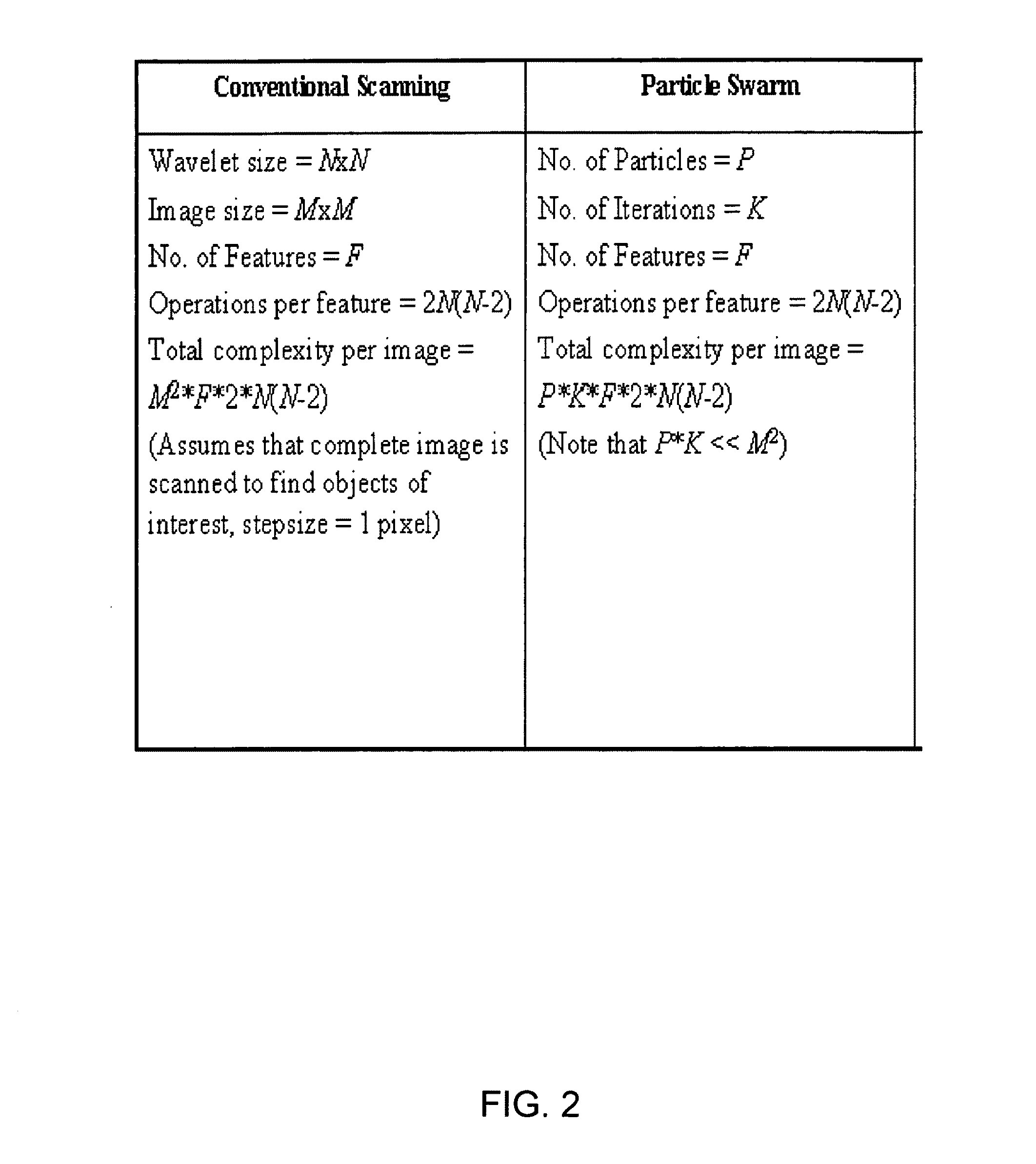Object recognition system incorporating swarming domain classifiers
a domain classifier and object recognition technology, applied in the field of object recognition systems, can solve the problems of high cost, false alarms, and high computational intensity of sequential search, and achieve the effect of improving the overall system complexity, reducing the complexity of the system, and reducing the complexity of the overall system
- Summary
- Abstract
- Description
- Claims
- Application Information
AI Technical Summary
Benefits of technology
Problems solved by technology
Method used
Image
Examples
Embodiment Construction
[0057]The present invention relates to an object recognition system, and more particularly, to a system for visual recognitioN objects in a domain which combines feature-based object classification with search mechanisms based on swarm intelligence.
[0058]The following description, taken in conjunction with the referenced drawings and / or tables, is presented to enable one of ordinary skill in the art to make and use the invention. Various modifications will be readily apparent to those skilled in the art, and the general principles defined herein may be applied to a wide range of aspects. Thus, the present invention is not intended to be limited to the aspects presented, but is to be accorded the widest scope consistent with the principles and novel features disclosed herein. Furthermore, it should be noted that unless explicitly stated otherwise, the figures included herein are illustrated qualitatively and without any specific scale, and are intended to generally present the concep...
PUM
 Login to View More
Login to View More Abstract
Description
Claims
Application Information
 Login to View More
Login to View More - R&D
- Intellectual Property
- Life Sciences
- Materials
- Tech Scout
- Unparalleled Data Quality
- Higher Quality Content
- 60% Fewer Hallucinations
Browse by: Latest US Patents, China's latest patents, Technical Efficacy Thesaurus, Application Domain, Technology Topic, Popular Technical Reports.
© 2025 PatSnap. All rights reserved.Legal|Privacy policy|Modern Slavery Act Transparency Statement|Sitemap|About US| Contact US: help@patsnap.com



